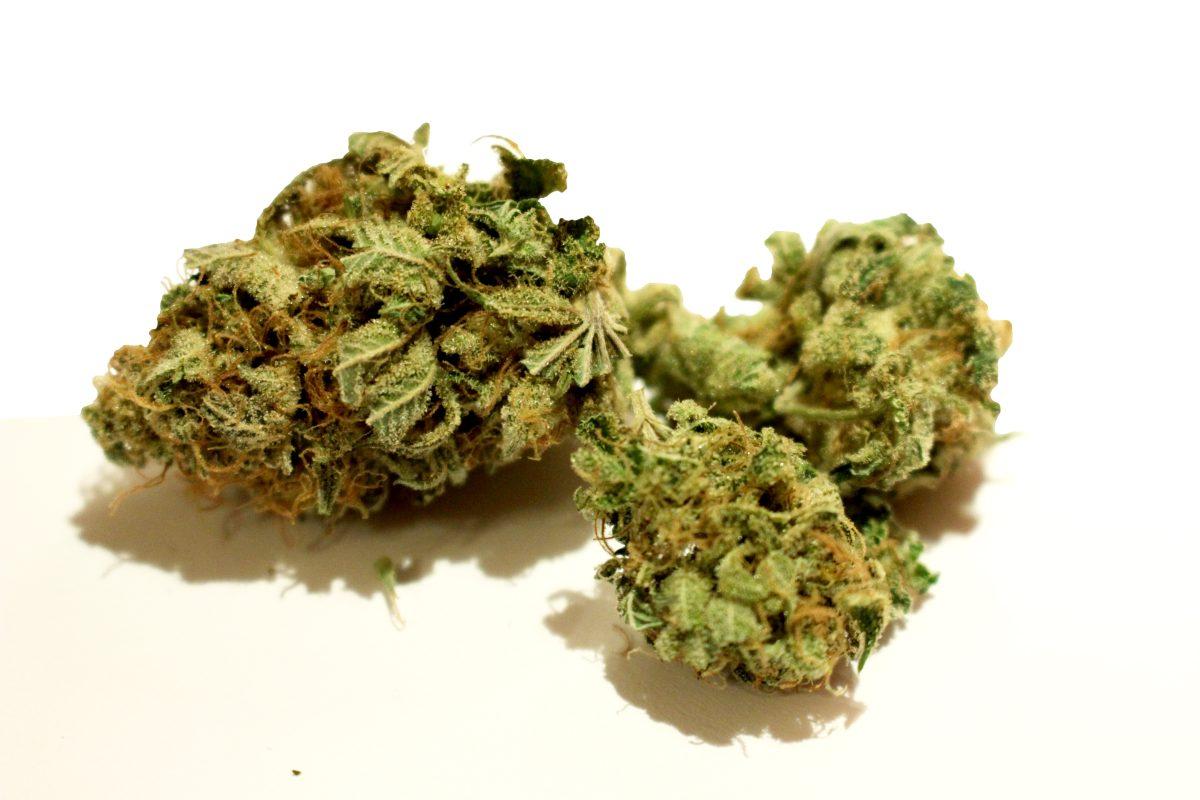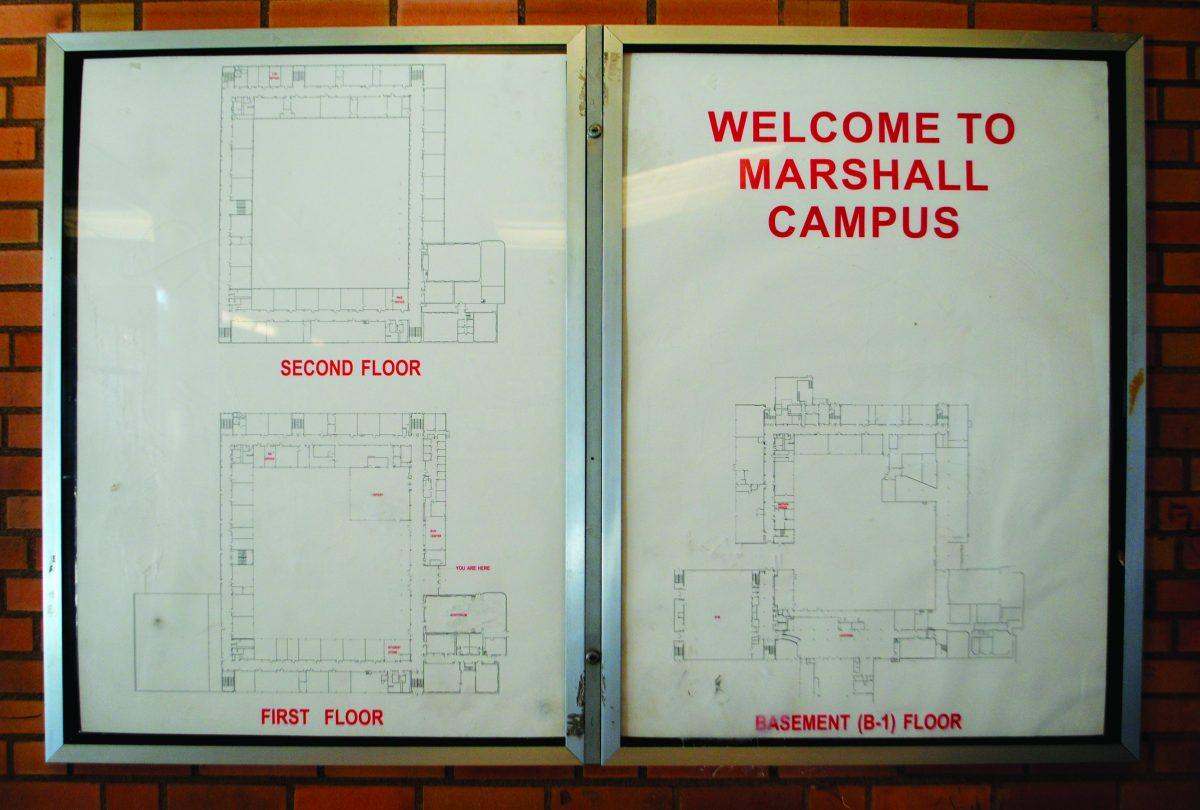In early November, Oregon voters lifted the state’s prohibition of marijuana by passing Measure 91. When the measure goes into effect in January 2016, it will allow adults over 21 to legally possess, use and cultivate marijuana.
The state follows Colorado and Washington in making it legal to buy, sell and grow pot for personal use. Statewide, the measure passed by about 55 percent to 44 percent of voters who participated. In Multnomah County, more than 70 percent of voters approved the measure.
While much of the attention around the measure focused on adults being able to legally use the drug, access to weed by another segment of the population – high school teens – has gone largely without discussion during the campaign.
At Grant High School, drug use has long been an issue and weed is readily accessible among some students who get the drug from parents with medical marijuana cards, from other students or on the street. Medical marijuana dispensaries dot the Hollywood neighborhood just southeast of the school.
Other high schools across Oregon face similar issues. So just what effect will the new law have on Grant? People in the community have mixed views.
English teacher Therese Cooper sees Measure 91 as Oregon’s first legitimate law concerning marijuana. “This particular bill was written so much better than the other ones,” Cooper says, noting that she approves the measures’ initiative allowing police officers to “go after drugs that are far more harmful like methamphetamines. They can focus their attention on that rather than something that is relatively harmless.”
Melissa Lahvis, an Oregon Health & Science University pediatrician and Grant parent, voted no on the measure. She worries Oregon laws are too liberal and will provide more access for teens. She also cited cases where young children who ingested food laced with marijuana in Colorado got sick.
“If they put it in chocolate that tastes good, they’ll just keep eating it,” says Lahvis.
Lahvis also points out the effect the drug has on adolescents’ developing brains. For females, total brain size peaks between 10 and 11 years of age and between 14 to 15 for males. “The brain is still developing up until the early twenties, and I worry about developing brains and any kind of chemical,” Lahvis says. “Weed is going to make attention much harder. If you smoke before you go to bed, your attention is still being affected the next morning at school.”
Grant senior Da’Marea Stigler says he thinks students at the school will become desensitized to the fact that marijuana was always illegal. It’s someone’s choice, but there will no longer be a stigma, he says.
“I definitely think that people are gonna smoke more weed in high school now that it’s passed,” he says. “Even though it’s not legal for them, it’s more accessible.”
Since the law doesn’t go into effect until 2016, state officials have some work to do to prepare for the sale of weed and enforcement of the rules. Some say the rules will restrict access to teens, keeping marijuana further away from them. Others say it will take some time before the Oregon Liquor Control Commission – the governmental body that will enforce sales – is ready to handle transactions under the new laws.
“It’s a gray area,” says Teresa Estrada, who has an Oregon medical marijuana card and voted for the measure. “I think it’s going to be problematic in the beginning, maybe even for a decade.
“You go across to Vancouver, they don’t know what to do. You’re not supposed to be in public with it but people are walking down the street smoking joints. They say you can have an ounce on you, but the cops pull people over. The law’s not clear right now.”
Kris Anderson, an associate professor of psychology at Reed College in Southeast Portland, says there hasn’t been enough time to collect significant data to understand the ramifications. “It’s going to take us a few years to be able to catch up data-wise in terms of the implementation and what its effects are like in use,” says Anderson. “This is really a whole new ballgame for us in terms of how we think about this as a society.”
That timeframe worries Devarshi Bajpai, Multnomah County’s addictions service manager. “I would’ve preferred that Oregon waited until we saw what happened in Colorado and Washington before we leap into the mix,” he says.
Bajpai’s main concern in the passing of Measure 91 is that “the regulation will be not be tight enough to prevent kids from getting marijuana,” he says. From a professional standpoint, Bajpai asserts that the legalization of a drug almost always results in a decrease in the “perception of harm,” especially among adolescents.
“I think the passage suggests to kids that it’s not that big of a deal,” he says. “‘It’s legal, you’re not going to get arrested for it, adults around you are doing it…the harm can’t be all that bad.’”
Bajpai’s office pays for programs that deal with and support countless addiction cases. He said studies show that along with alcohol, marijuana acts as an entry point. “People, especially when they’re young, think they can quit using any time they want, but they haven’t had a lot of experience trying to quit and not being successful at it yet,” he says.
A comprehensive review of 20 years of research on marijuana and health, conducted by Washington County’s Department of Health and Human Services, shows that “cannabis dependence is among the most common forms of illicit-drug dependence” in the U.S., stating that 1 in 10 people who use cannabis become dependent.
While Anderson agrees that “using any pharmaceutical drug for recreational purposes puts your brain at risk,” she says it’s important to understand that the majority of youth don’t use marijuana.
“There tends to be this assumption that if marijuana is more available, youth will use it,” she says. “The thing is that marijuana is pretty darn available to use now, and plenty of youth don’t use it.”
Peter Zuckerman, the communications director for the Yes on 91 campaign, says the state will benefit financially. “Oregon did the right thing,” he says. “Instead of money that’s currently going to illegal gangs, dealers and drug cartels, money will go to things like education.”
And that’s the plan. Money raised from taxes on the drug will be distributed with 40 percent going to schools, 20 percent going to law enforcement and the remainder to public health and safety programs.
At Grant, health teacher Randy Heath says getting the extra money will be a bonus. “I think the taxation of it will be very beneficial for the state,” says Health, who voted yes on the measure exclusively for revenue reasons, not because he intends to use the drug.
Grant counselor Tearale Triplett predicts Grant’s culture to grow more accepting of marijuana.
“When I was in high school, kids who smoked were called stoners, and typically you looked at those kids as kids who were on their way to nowhere,” he reflects. “I think this changes that perception now. People don’t understand that just because it’s legal doesn’t mean it is good for your health.”
Grant administrators say they share apprehension toward a possible increase in student usage. But Principal Carol Campbell and Vice Principal Kristyn Westphal add that they are hopeful the new law will reduce issues of overrepresentation in the criminal justice system.
According to the American Civil Liberties Union, blacks are four times more likely to be arrested for marijuana possession than whites.
Even though legalization lawfully concerns an older population, for students at Grant, it’s all up to personal choices.
“I think there’s always gonna be a black market because teens are always going to want to buy pot,” says senior Alec Mouser, who would’ve voted yes on Measure 91 had he been 18 for the election. “There’s always gonna be someone willing to sell to them to make money.” ◊




































